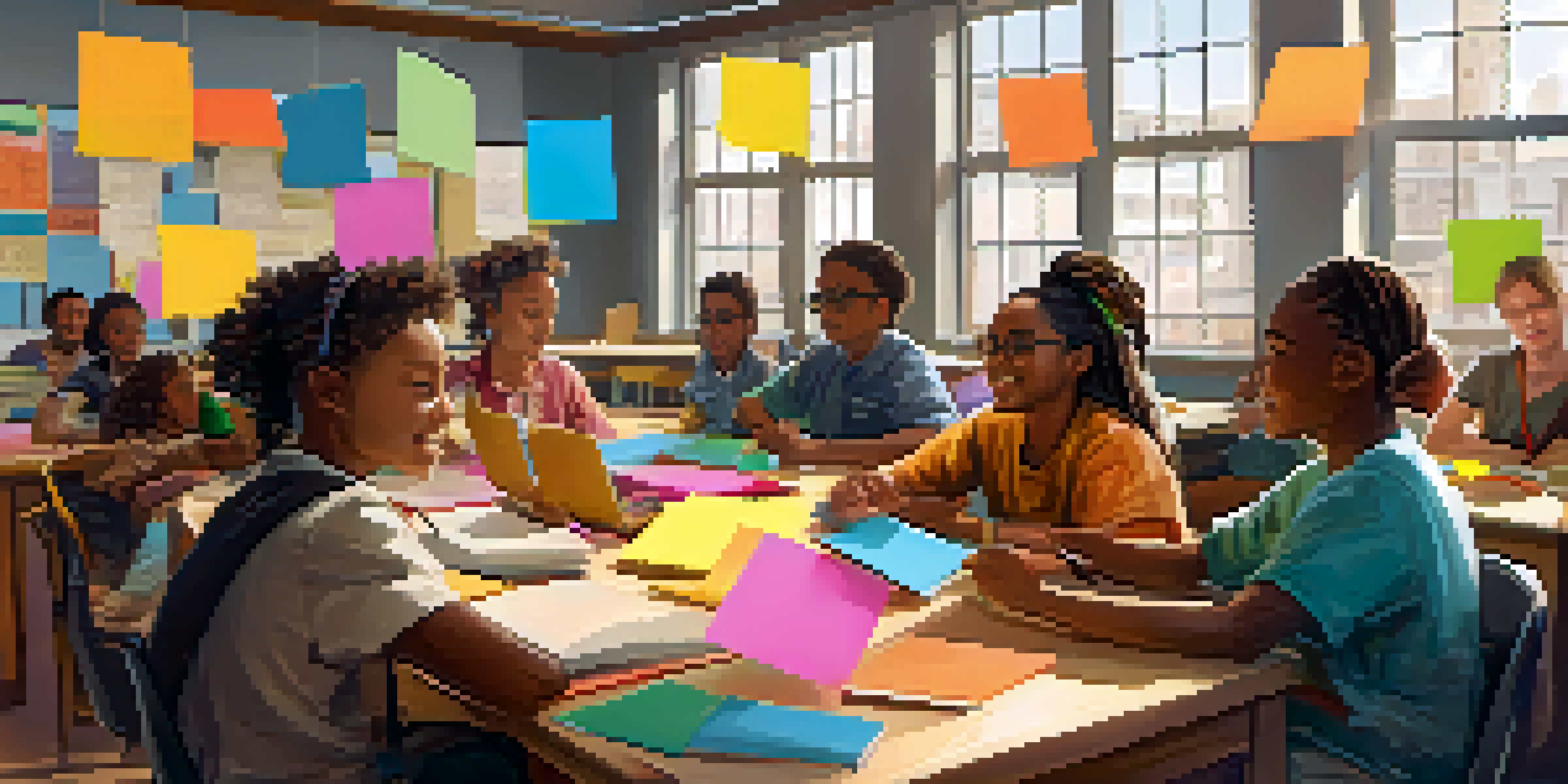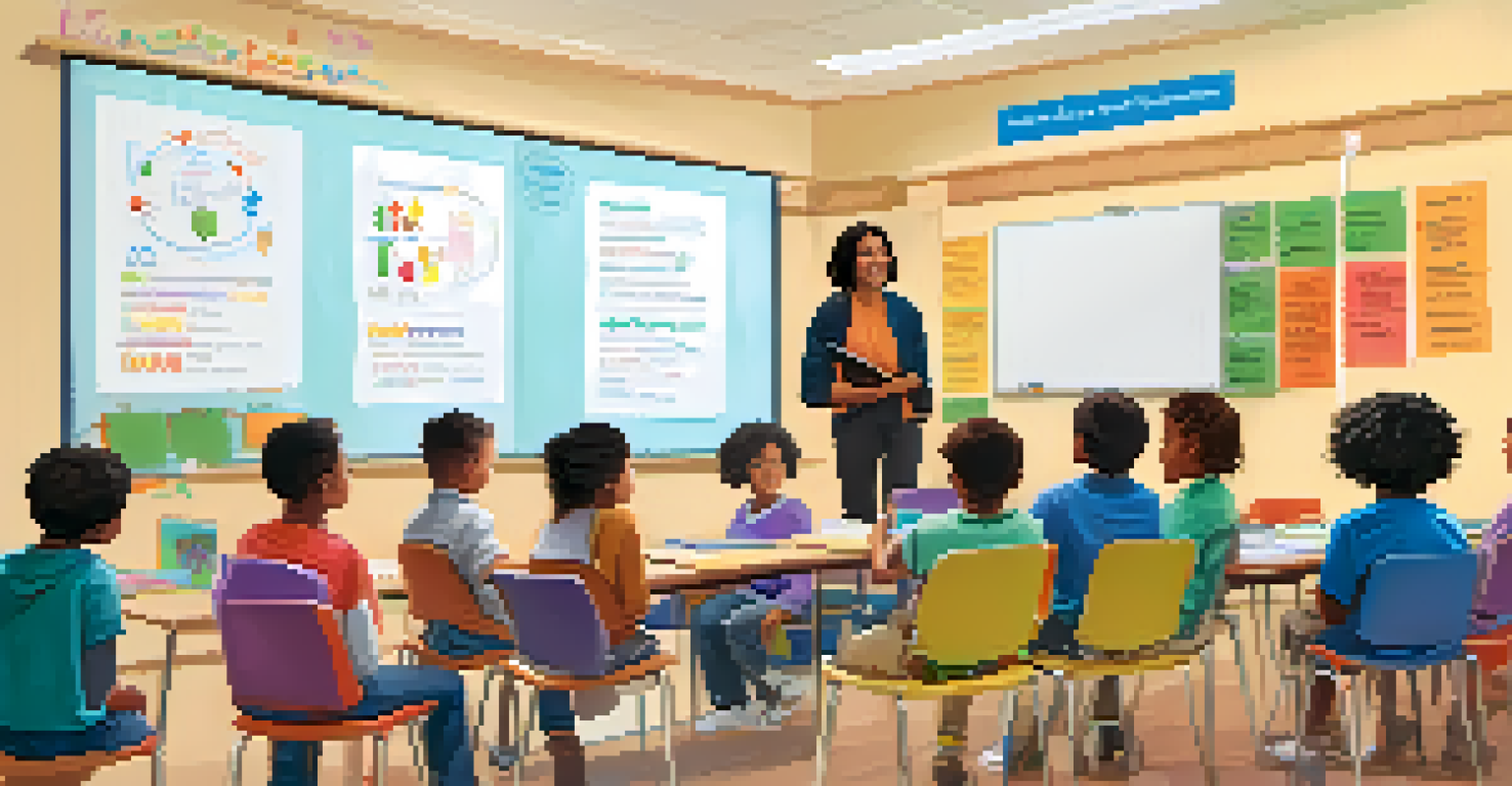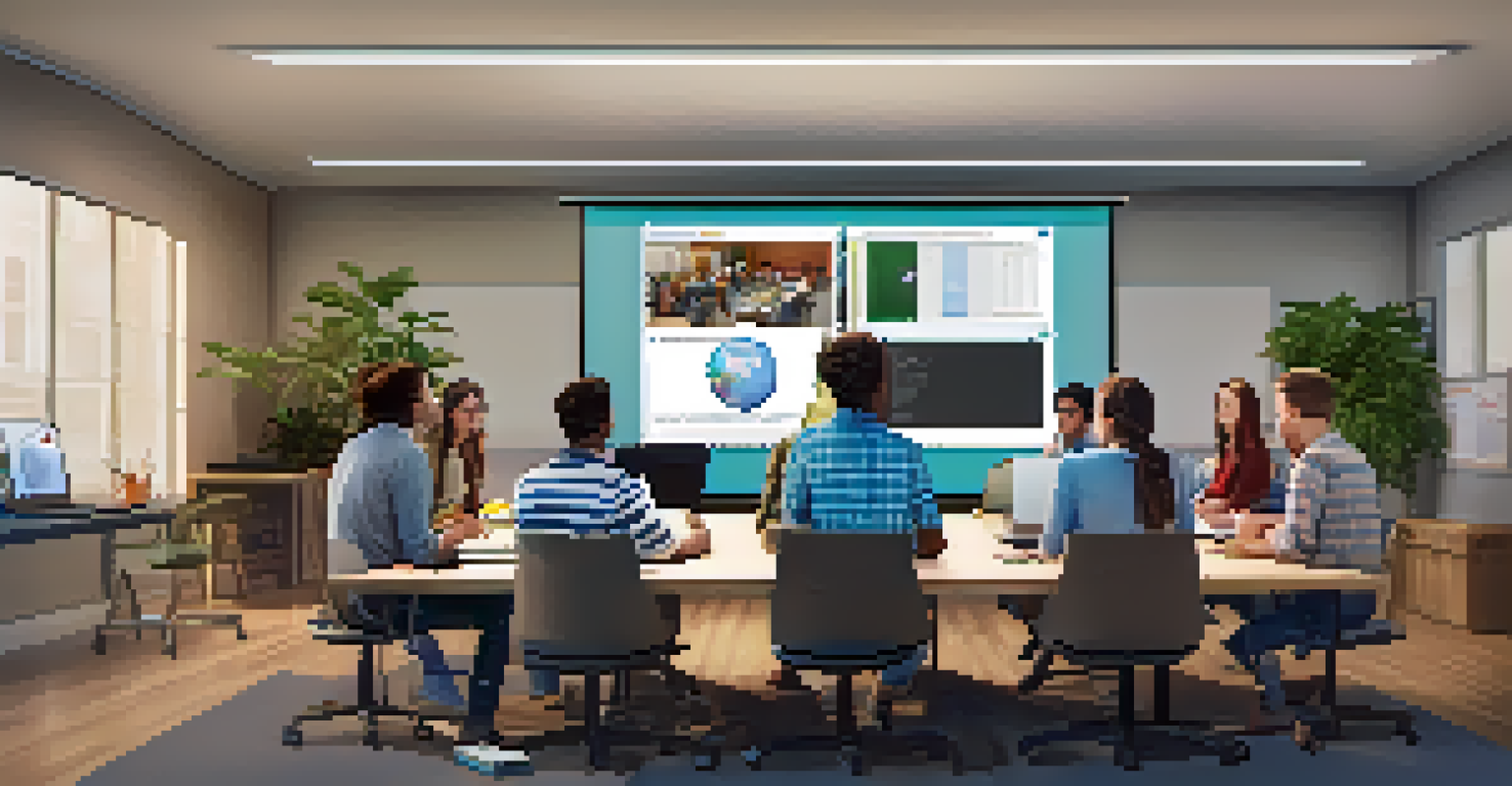Creating Inclusive Collaborative Learning Experiences for All

Understanding Inclusive Collaborative Learning
Inclusive collaborative learning is all about creating an environment where everyone feels valued and empowered to participate. It goes beyond just mixing different groups of people; it's about fostering genuine connections and mutual respect. Think of it like a potluck dinner, where everyone brings a unique dish to the table, enriching the overall experience with diverse flavors and perspectives.
The greatest gift of education is the ability to think critically and creatively, which leads to collaboration and innovation.
In such settings, learners from various backgrounds can share their insights, challenge assumptions, and learn from one another. This not only enhances individual understanding but also builds a sense of community. By acknowledging and celebrating differences, we create a richer learning experience that benefits everyone involved.
To achieve this, educators and facilitators must actively work to remove barriers that hinder participation. This can include everything from adapting teaching methods to accommodating different learning styles, to ensuring that all voices are heard during discussions. Ultimately, the goal is to create a space where everyone feels they belong.
Recognizing Diverse Learning Needs
Every learner comes with a unique set of experiences, skills, and challenges. Recognizing these diverse learning needs is crucial in crafting an inclusive environment. For instance, some students may thrive in group discussions, while others may prefer written communication or one-on-one interactions.

By taking the time to understand these preferences, educators can tailor their approaches to meet individual needs. This might mean providing various ways to engage with the material, such as through visual aids, hands-on activities, or digital tools. The key is flexibility and a willingness to adapt.
Fostering Inclusion in Learning
Creating an inclusive collaborative learning environment involves valuing diverse perspectives and ensuring everyone feels empowered to participate.
Moreover, fostering an atmosphere where students feel comfortable sharing their needs is essential. Open discussions about learning preferences can empower learners to take charge of their educational journeys, ultimately leading to a more cohesive and productive group dynamic.
Building a Supportive Learning Environment
Creating a supportive learning environment is akin to nurturing a garden—each participant must feel safe and encouraged to grow. This involves establishing clear expectations and fostering trust among learners. When individuals feel secure, they are more likely to express their ideas and take risks in their learning.
In diversity there is beauty and there is strength.
One effective strategy is to set group norms together, allowing participants to contribute to the rules that govern their interactions. This collaborative approach not only promotes accountability but also instills a sense of ownership in the learning process. Everyone is more likely to adhere to norms they helped create.
Additionally, celebrating successes—big and small—can significantly boost morale. Recognizing individual and group achievements fosters a positive atmosphere where learners feel appreciated, motivating them to engage more actively in collaborative efforts.
Utilizing Technology for Collaboration
In today's digital age, technology plays a pivotal role in facilitating collaboration. Tools like virtual whiteboards, discussion forums, and video conferencing can bridge gaps, enabling learners to connect regardless of their physical location. This accessibility is especially beneficial for those who may struggle with in-person interactions.
Consider using platforms that allow for asynchronous communication, giving participants time to reflect before sharing their thoughts. This can be particularly helpful for introverted learners who may need extra time to formulate their ideas. By providing multiple avenues for collaboration, we cater to a wider range of learning styles.
Recognizing Unique Learning Needs
Understanding and accommodating the diverse learning preferences of individuals is crucial for crafting an effective and supportive educational setting.
Moreover, technology can also enhance inclusivity by offering features like screen readers or closed captioning, making learning materials accessible to those with disabilities. Embracing these tools not only enriches the collaborative experience but also aligns with the goal of inclusivity.
Encouraging Open Communication Among Learners
Open communication is the backbone of any collaborative learning experience. It encourages participants to voice their thoughts and concerns freely, fostering a culture of transparency. Creating a space where feedback is welcomed and valued can lead to richer discussions and deeper understanding.
To promote open communication, facilitators can model active listening and respectful dialogue. This sets the tone for participants to engage in constructive conversations, where differing opinions are seen as opportunities for growth rather than conflict. Think of it as a brainstorming session where every idea, no matter how unconventional, has the potential to spark innovation.
Encouraging peer-to-peer feedback can also enhance communication. When learners feel comfortable providing and receiving constructive criticism, it not only strengthens relationships but also enhances individual learning outcomes. The ability to express thoughts and listen to others is a vital skill that extends far beyond the classroom.
Promoting Cultural Awareness and Sensitivity
Cultural awareness is a key component of inclusive collaborative learning. Recognizing and respecting diverse backgrounds enriches the learning experience and promotes empathy among participants. Just like a tapestry, each culture adds its unique thread to the fabric of the learning community, creating a more vibrant and colorful experience.
Facilitators can encourage cultural sharing through activities that celebrate different traditions or perspectives. This could be as simple as sharing stories or as involved as organizing cultural presentations. Such initiatives not only educate but also foster mutual respect and understanding.
Technology Enhances Collaboration
Utilizing digital tools facilitates collaboration and accessibility, allowing learners to connect and engage in ways that suit their individual needs.
It's also essential to address any biases that may arise during discussions. Creating a safe space for conversations about culture can help participants confront and navigate sensitive topics. By promoting cultural sensitivity, we pave the way for a more inclusive and harmonious learning environment.
Evaluating and Improving Collaborative Practices
To ensure that inclusive collaborative learning experiences are effective, continuous evaluation is essential. Gathering feedback from participants can provide valuable insights into what works and what needs improvement. This process is much like fine-tuning a recipe; adjusting ingredients based on taste can lead to a more satisfying dish.
Facilitators can use surveys, informal check-ins, or reflection sessions to gauge participant satisfaction and engagement. Analyzing this feedback allows for adjustments in teaching methods or group dynamics, ensuring that everyone’s needs are being met. Remember, the goal is to create a responsive learning environment that adapts to its participants.

Additionally, sharing best practices among educators can foster a culture of continuous improvement. By learning from one another's experiences, we can collectively enhance our approaches to inclusive collaboration. Ultimately, the commitment to evaluation and adaptation ensures that all learners can thrive in a supportive environment.